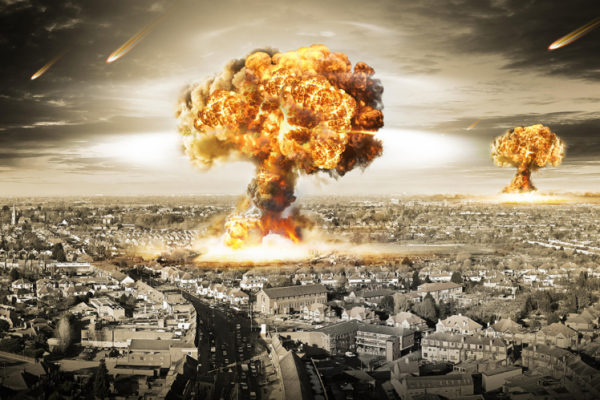On February 7, 2018, the U.S.-led coalition in Syria conducted air and artillery strikes against what were believed to be pro-government forces in response to an “unprovoked attack” launched by these pro-regime troops. Not long after, reports began emerging that significant numbers of Russian personnel were included in the over 100 dead and wounded. While Russia denied this at first, eventually, the accepted version of events on both sides was that there were some Russian nationals who did lose their lives in Syria. These Russians are arguably mercenaries and contractors, not official troops.
This is not the first time the U.S.-led coalition has struck pro-government forces in Syria. Aside from Donald Trump’s grandiose strike on a Syrian airbase in April of last year, U.S. forces also conducted multiple strikes against Syrian and Iranian-backed forces as these factions began to encircle the American military’s presence at a base in al-Tanf.
Donald Trump has famously relaxed the Obama-era restrictions on calling in airstrikes, meaning commanders on the battlefield can call in airstrikes at their disposal without any oversight. Previously, an airstrike could not be launched on a whim and was required to go through certain protocols before it could be delivered. Now, even associated forces can call in American airstrikes on the battlefield. The most infamous example of this is when Iraqi commanders called in a U.S. strike that ended up killing well over 200 civilians in a single bombardment.
Barely a week after Trump’s Syria strike in April, the U.S. military dropped a $450,000 bomb in Afghanistan dubbed the “Mother of all bombs” (MOAB). It soon transpired that the decision to drop the bomb was not made by Trump himself as commander-in-chief but by Gen. John Nicholson, commander of the U.S. forces in Afghanistan.
It’s time to ask yourself: Are you comfortable with commanders on the battlefield calling in airstrikes even if those airstrikes could potentially kill personnel on the ground belonging to another nuclear power?
Last Tuesday, Wisconsin Democrat Mark Pocan told the Nation that “Congress has never authorized force against Syrian, Turkish, Yemeni Houthi, Russian, Iranian, or North Korean forces. Yet reportedly, a secret administration memo may claim the legal justification to do just that: attack Syrian, North Korean, and other forces without any congressional authorization.” [emphasis added]
According to Lawfare, a lawsuit required the government to reveal a list of documents relating to the April Syria strike, but not the actual documents themselves. The court-ordered directions forced the government to reveal that the seven-page secret memo Pocan was referring to was drafted up by administration lawyers on April 6, 2017, just before Trump’s infamous strike. The government’s declarations revealed that only a few of the words on one of the memo’s pages are classified, and they are related to facts, not legalities. Still, the administration refuses to disclose the memo to the public, claiming the document is exempt from the Freedom of Information Act.
“I am also concerned that this legal justification may now become precedent for additional executive unilateral military action, including this week’s U.S. airstrikes in Syria against pro-Assad forces or even an extremely risky ‘bloody nose’ strike against North Korea,” Senator Tim Kaine (D-Va) said last week.
In early February, the Pentagon released its much anticipated 2018 Nuclear Posture Review. From the Washington Post’s Katrina vanden Heuvel’s assessment:
“The review reaffirms the United States is ready to use nuclear weapons first in an alarmingly wide range of scenarios. It remains ‘the policy of the United States to retain some ambiguity regarding the precise circumstances’ that might lead to a nuclear response. The United States reserves the right to unleash nuclear weapons first in ‘extreme circumstances’ to defend the ‘vital interests’ not only of the United States but also of its ‘allies and partners’ — a total of some 30 countries. ‘Extreme circumstances,’ the review states explicitly, include ‘significant non-nuclear attacks,’ including conventional attacks on ‘allied or partner civilian population or infrastructure.’ The United States also maintains a ‘portion of its nuclear forces’ on daily alert, with the option of launching those forces ‘promptly.’ [emphasis added]
The U.S. has an active stockpile of at least 4,000 nuclear weapons, rivaled only by Russia. According to the Physicians for Social Responsibility (PSR), a “limited” regional exchange of nuclear weapons could force one billion people to the point of starvation, and a week-long “regional” encounter could kill far more than died during World War II.
As Albert Einstein famously said, “I know not with what weapons World War III will be fought, but World War IV will be fought with sticks and stones.”
Heuvel correctly summarized the current nuclear strategy:
“In sum, the United States is building a new generation of nuclear weapons and delivery systems, will deploy more usable nuclear weapons in ‘forward’ areas, remains committed to possible ‘first use’ of nuclear weapons even against non-nuclear attacks in defense of 30 countries, retains missiles on active alert ready to launch, is skeptical of the possibility of any progress in arms control and is hostile to the global movement to make nuclear weapons illegal. All this as tensions with Russia and China rise, relations with North Korea remain literally explosive, and the nuclear deal with Iran stays under constant assault from the president.”
One thing we do know is that the U.S. is openly considering nuclear strikes in response to cyber-attacks, which could be conducted by anyone from lone-wolf hackers to Iran, North Korea, Russia, or China. We also know that the Trump administration has been weighing a “limited” strike on North Korea for some time now, even as North and South Korea pursue a peaceful dialogue of their own. Even now, the U.S. continues to position nuclear-capable B-52 and B-2 bombers around the Korean peninsula. The B-2 is the most advanced bomber in the United States air force, capable of dropping the military department’s biggest bomb, which weighs in at around 14,000 kilograms.
This is a recipe for disaster. Donald Trump isn’t bringing the troops home and focusing on “making America great again.” According to the Department of Defense, American troop deployments to the Middle East had increased 33 percent by the end of last year.
It’s time for both sides of the political coin to confront their delusions and face reality. Donald Trump is by far the most hawkish, trigger-happy president to have ever been sworn into office, which is no easy feat considering his predecessors. His policies are leading the United States down a dangerous path that could see a miscalculated strike on Syria, Russia, Iran, North Korea, or even China — whether by mistake or by design. Considering that strikes have already been underway in Syria against the Syrian government and its allies, including Russia, these policies are likely to lead to something far more explosive down the line.
Source: www.theantimedia.org





Trump does not control sh–, wake up?